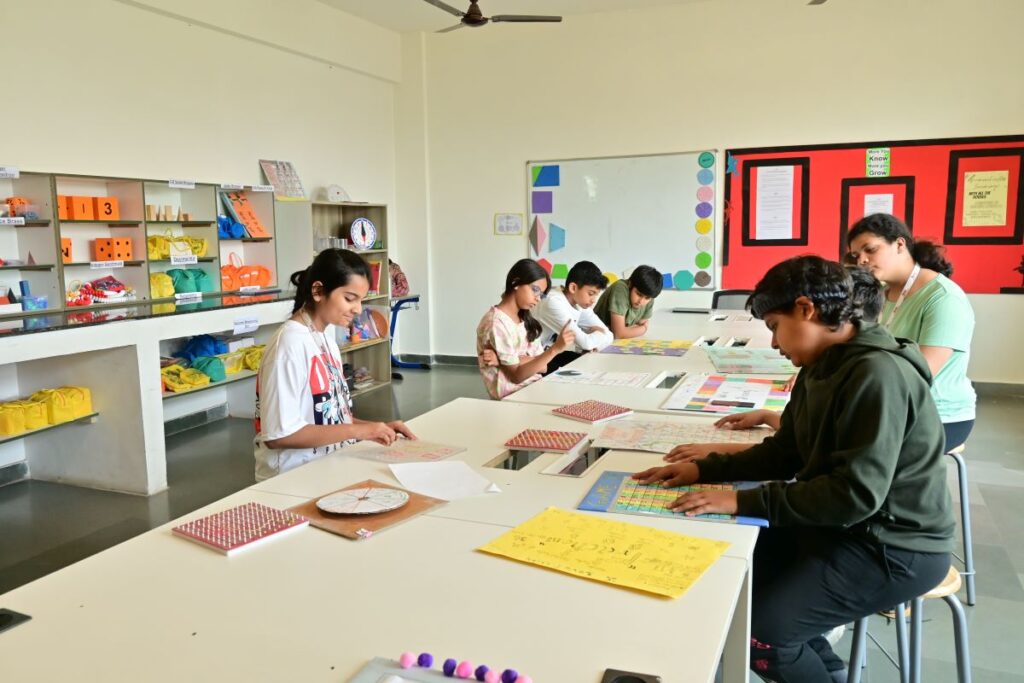By Ritu Mahajan
Group projects have become a vital part of modern education, fostering collaboration, critical thinking, and creativity among students. More than just a way to distribute workload, group projects simulate real-world scenarios where teamwork and collective problem-solving are essential for success. At Vega Schools, the best school in Gurgaon, students are guided through these collaborative experiences, learning how to approach and solve challenges together.
1. Fostering a Collaborative Environment
Vega Schools provides a structured and supportive environment where students are encouraged to collaborate. Teachers design group projects that teach students to work harmoniously, exchange ideas, and communicate openly. This emphasis on teamwork helps students develop essential interpersonal skills needed for effective problem-solving in groups.
In the classroom, peer interaction is frequently encouraged, allowing students to brainstorm and share insights. This collaborative process enables learners to appreciate diverse perspectives, demonstrating how teamwork is crucial in tackling complex challenges.
2. Teaching Conflict Resolution
Conflict is an inevitable part of group work. Vega Schools use these moments as teaching opportunities to show students how to resolve disagreements constructively. Learning leaders provide guidelines for respectful communication, negotiation, and compromise, enabling students to handle conflicts diplomatically.
By guiding students through these situations, educators help them develop resilience and emotional intelligence—two key factors in effective team problem-solving.
3. Encouraging Critical Thinking
Group projects at Vega Schools often involve complex problems that require critical thinking. Students are taught to analyze issues, explore various solutions, and dissect challenges into smaller, more manageable components. Educators guide discussions and introduce problem-solving frameworks that encourage deeper analysis.
For instance, the “5 Whys” technique, where students repeatedly ask “why” until the root cause of a problem is uncovered, is a method used to promote critical thinking. This approach helps students move beyond surface-level analysis and enhances their problem-solving capabilities.
4. Promoting Role-Based Learning
In group projects, students often take on roles based on their strengths—whether as researchers, organizers, presenters, or creators. Vega Schools encourages learners to identify their strengths and assign responsibilities accordingly, ensuring that each member plays a meaningful part.
This role-based approach not only streamlines the problem-solving process but also emphasizes the importance of collaboration. Students learn that solving complex problems requires diverse talents and perspectives, a lesson that will serve them well in their future careers.
5. Providing Structured Guidance
While students are encouraged to work independently in groups, teachers at Vega Schools play a crucial role in offering structure and guidance. They provide problem-solving frameworks, checklists, and timelines to help students stay organized and focused. This structure prevents group projects from becoming chaotic and ensures steady progress.
As students become more confident, learning leaders gradually step back, allowing learners to take the lead while remaining available for support when necessary.

6. Emphasizing Reflection and Feedback
Reflection is a key component of learning in group projects. Vega Schools encourages students to evaluate their group’s process at the end of a project. Did everyone contribute equally? What could have been improved? This self-assessment helps students learn from their experiences and refine their problem-solving skills for future tasks.
During this phase, learning leaders provide constructive feedback, helping students identify their strengths and areas for improvement. This continuous feedback loop is essential for personal growth and skill development.
7. Incorporating Real-World Scenarios
Vega Schools ensures that students can relate group projects to real-life situations. Educators incorporate practical, real-world problems into assignments, such as addressing environmental challenges, creating marketing campaigns, or developing business plans. These projects allow students to apply classroom knowledge in tangible ways.
By integrating real-world scenarios, Vega Schools helps students understand that the problem-solving skills they develop through group projects are transferable to their future careers and life challenges.
8. Building Emotional Intelligence
Group work at Vega Schools also helps students develop emotional intelligence. Learners grow in empathy, patience, and the ability to collaborate with diverse personalities. By facing challenges together, students learn to respect others’ viewpoints and appreciate the value of different contributions, which are crucial for effective problem-solving.
Conclusion
By fostering collaboration, teaching critical thinking, and providing structured guidance, Vega Schools, one of the top schools in Gurgaon, equips students with essential skills for problem-solving in group projects. These competencies extend beyond the classroom, preparing students to excel in academic, professional, and personal challenges throughout their lives.
Explore Vega Schools’ insights on How to Develop Problem-Solving Skills in Children. Read More.
Vega Schools offers holistic education to children in Delhi NCR and is rated among the top Schools in Gurgaon. Its modern infrastructure, facilities, and experienced teachers are a big asset to the learning & development of students, be it for Nursery, Primary or Senior children making Vega Schools the best schools in Gurgaon. For information about admission please visit the Vega Schools campuses in Sector 48 and Sector 76 Gurugram.
